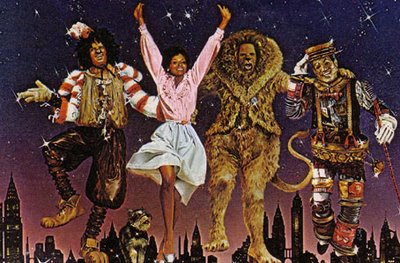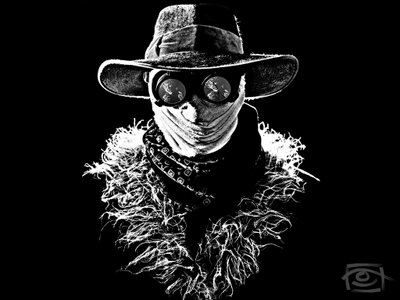Study Guide (it's a work in progress)Stevens Poems
"Sunday Morning"- it is confirmation that Stevens is a secular humanist
"The Study of Two Pears"- This is an important demonstration of Stevens's continual battle of the imagination v. reality. In this poem you are just supposed to see the pears as two pears.
Have a basic, Wikipedia, defnintion of the following:
Henry James aka. "The Master"- Though he was born in New York City, in 1843, James spent most of his life in Britain and most of his youth traveling between Americ and Europe. James was one child out of three, the other two were William James the philosopher and Alice James the diarist. He was a literary critic but his short stories and novels were the source of his fame. He wrote a total of 22 novels, two of which were unfinished, 112 short stories, many plays, and some non-fiction essays and books. He never married, and it is questioned whether or not he was gay. He was one of the first to work in a genre called trans-Atlantic literature wherein characters from the European, old world face characters from the American, new world. American characters are typically bold, rude, ignorant, and innocent while European characters are ususally more sophisticated and refined. Some of his more famous novels include: "Portrait of a Lady," "The American," "Washingtons Square," and "The Wings of the Dove." James died of a stroke in London in December 1915
Flannery O'Connor- Flannery O'Connor was born in Georgia to an Irish Catholic family. After graduating from Georgia State College for Women, she was invited to stay with Robert Fitzgerald, translator of Odeipus, The Odyssey, and The Illiad. She formed a strong friendship with his wife, Sally and she helped in editing O'Connor's letters to her friend Betty Hester, to later be published. O'Connor was diagnosed with lupus, a disease which had taken her father's life, and spent most of her life at her farm raising birds. Despite the grotesque nature of all her works, O'Connor places heavy emphasis on the state of grace that she wishes most of her characters to reach. She also addresses the issues of poverty and race. Her work is typically described as
Southern Gothic, a style of writing where events that occur are highly unusual and these events help the reader understand the social issues and culture of the American South. Included in this genre are William Faulkner, Truman Capote, and Tennessee Williams. At the age of 39 O'Connor died of lupus to be outlived by her moter who lived till the age of 99.
Wallace Stevens- Wallace Stevens was born in Pennsylvania 1879. He attended but did not graduate from Harvard then moved to New York where he attended and graduated from New York Law School. Stevens married Elsie Kachel Moll and together they had a daughter, Holly. He worked at several law firms in New York before joining Hartford Accident and Indemnity Company and moving to Hartford. In 1955 he was awarded the Pulitzer Prize. He was then offered a faculty position at Harvard but he declined. He also joined a society of people dedicated to the arts and literature which included Barbara and Henry Church. He died in 1955 at the age of 76. It is worth noting Steven's emphasis on imagination v reality and the supreme power of fiction. Stevens's work also flourished in a manner different to that of most poets. As he aged he produced more work instead of the typical other way around.
Zora Neale Hurston- For most of her lifetime Hurston refused to tell her actual birthday, only recently did researchers figure out that she was born in Notasulga, Alabama in 1891. However when she was young she moved to Eatonville, Florida and this is the place where she grew up. Hurston began her education at Howard University but because of financial struggles she was forced to give up. She was then offered a scholarship at Barnard College and she graduated with a degree in Anthropology. It was here that she was first able to look at her experience growing up with the eyes of an ethnographer. She applied this to her novels: "Of Mules and Men" and "Their Eyes Were Watching God." Hurston was awarded the Guggenheim Fellowship to conduct ethnographic research in Haiti. Zora's work was not popular for her time, partly because of her political leanings and because of her use of dialect. Also, though she was a part of the Harlem Renaissance she didn't approve of the judicial decision on the integration of schools. Because of this she was assigned to cover the murder trial of Ruby McCollum. She was buried in an unmarked grave in Fort Pierce Florida; that grave was later discovered by Alice Walker and Charlotte Hunt.
 The Wizard of Oz
The Wizard of Oz- The Wizard of Oz was written in 1900 by L. Frank Baum.
I am going to assume that everyone knows this story so the only things I'm going to write are other important bits of information. There are three interpretations of this work, all of which were mentioned in class: spiritual, advocating spiritual humanism, populist, and racist. The production of the book was a musical done first in Chicago, 1902 and then a year later in New York. There was then created an Oz film series in silent film (1908 & 1914.) There were other, less successful versions created in 1910, 1914 and 1925. The most famous and successful version was released in 1939, featuring Judy Garland as Dorothy. This movie did not use the musical score used in the 1902, a musical score that has has, proved impossible to revive. Later versions include: "The Wiz" an all black version produced in the 70's on Broadway, a 1978 movie featuring Diana Ross as Dorothy and Micheal Jackson as the scarecrow......
it sounds terrifying, and a 2005 muppet movie. There has also been an ABC television series based on the film, another series called "The Oz Kids," and tributes to the work both in Futurama and Scrubs. Other new versions include a receration based on the original book done by the Toronto Opera Company, and a version based on the book Wicked. The book and movie still serve as great American fairy tales.
Citizen Kane, originally "The American"- Citizen Kane was released in 1941 by RKO pictures. It was the first full length feature directed by Orson Welles. The character of Charlie Kane is supposedly based on William Randolph Hearst, Howard Hughes, Samual Insull, and Welles himself.
If there is any need for a plot summary click on the link above, the rest of this entry will be about detials and facts surrounding the movie. The movie is reknowned for its new uses of cinematography including its use of deep focus, a technique whereby the foreground and background could be simultaneously in focus. Also the use of low angle shots, which allowed the ceiling to be shown. For this we can thank Gregg Toland, the film's cinematographer. Herman J. Mankiewicz and Welles wrote the screeplay although Mankiewicz wrote most of it. The film started the career of many of the actors featured therein. Welles liked actors who were quickly able to change and act the way he want instantaneedously, so that they could easily conform to his vision. The film also revolutionized the use of makeup in movies, the characters were able to believabley age while not acually aging. Also, jump-cut shots were used to show the passing of time; the same scene was shot over and over while the characters changed outfits and "aged." Welles started great conflict with Hearst over whether or not the movie was based on Hearst's life including: the comment "You provide the pictures, I'll provide the war," the reference to Rosebud, Hearst's status as a newspaper mogul, and the similarity Susan Alexander had to Hearst's mistress Davies. Hearst offered RKO $800,000 to have the pictured destroyed before it was printed. Because RKO refused Hearst refused to mention the film in his papers, potenitally affecting its revenue.
Doppelgänger- The doppelgänger is the double, ghostly look alike, evil twin, or sometimes evil omen. The doppelgänger is Germanic in origin "doppel" means double and "gänger" means walking. Thus the doppelgänger is the walking double. Doppelgänger have no reflection or shaow and communicating with one is considered extremely unlucky. Sometime they can even plant ideas or thoughts in a character's head. Seeing a doppelgänger dooms one to a lifetime of sightings or to death. Supposedly Abraham Lincoln saw another face beside his while looking in the mirror; this was recently after he was elected. This face was deathly pale and his wife took it as an omen that he would be elected to a second term but would not survive. The most famous case of the doppelgänger is that of Emily Sagee, a schoolteacher in the 1800's. She and a crowd of around 13-42 children witnessed Sagee bilocate. The doppelgänger apparently ate but without any food, moved and was still, and was in fabulous health despite Sagee's deteriorating condition.
Xanadu- Xanadu was a capital within Kublai Khan's vast empire. There is an outer city, inner city, and a palace. This inspired Samual Coleridge to write the poem Kubla Khan and Xanadu becamse acssociated with riches, fertility, and prosperity.
An important note: All of the above are summaries of articles accessed on Wikipedia. I have provided to each entry and in no way claim that this is entirely my own work.Lines in Wallace Stevens that I found to be important.
"I do not know which I prefer, the beauty of inflections or the beauty of innuendos, the blackbird whistling or just after." Thirteen Ways of Looking at a Blackbird



